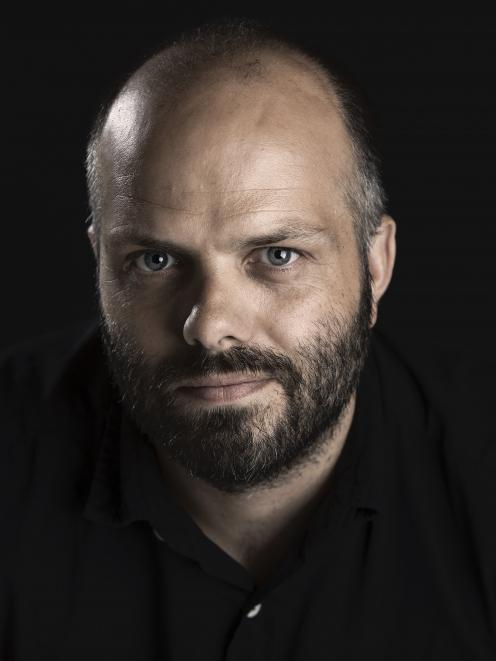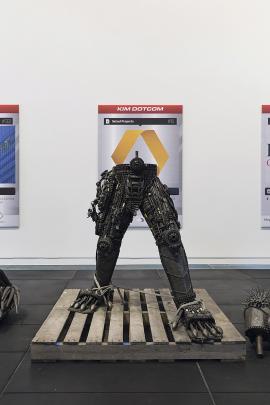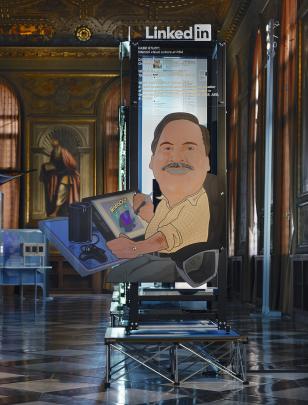He has been writing about art for years but has put himself on the line with his first book. Rebecca Fox talks to New Zealand art critic and writer Anthony Byrt.
The story of how Anthony Byrt's first book came along is a deeply personal one. One that he could not unravel from his quest to write about New Zealand contemporary art: if it had not happened, he would not have come home to New Zealand when he did.

What brought Byrt home was the traumatic birth of his first child in Berlin, which left the boy, James, with a brain injury. It was while dealing with the first days and weeks of James' life in intensive care that he and wife Kyra made the decision to come home to New Zealand.
They had been in Berlin, where Byrt was establishing a career as an art critic writing for the likes of frieze and Artforum International, for less than two years, having lived in London for several years prior. Byrt, who now writes for Metro as well, grew up in Auckland, so they headed there before heading up the coast to Anawhata, where they house-sat for artist Judy Millar and came to terms with what had happened to them.
"I had a kid, a wife, a family and I needed somehow to get through what happened; that is why it is an important part of the book.''
Those events provided a "frame'' for the book, which covers what he has seen in the New Zealand art world in the five years he has been back. It is built around a series of interviews with prominent artists such as Yvonne Todd, Shane Cotton, Billy Apple, Peter Robinson, Millar and Simon Denny, and emerging artists such as Luke Willis Thompson, Shannon Te Ao and Ruth Buchanan.
He wanted to avoid the typical art book conventions of broad-brush surveys, monographs or art histories, instead opting to write in the first person.
"It was clear the kind of writing I had been doing and want to do did not fit any of those conventions at all.''
His interest was in writing a book that brought together the different modes that he wrote in: feature writing, interviews, travel writing, reviews and criticism.
"I was really interested in seeing what happened when you put it all together on a page at the same time.''
He also wanted to model a mode of "being with contemporary art''. Byrt thinks a lot of people are unsure how to "be'' with that type of art, thinking it too esoteric, removed or high-minded.
"The act of being with it is a very important thing and so one of the things I wanted to show in the book was that even a critic like me [who] spends all his professional life with this stuff doesn't always have the answers.
"How do we grapple with the things contemporary artists do and why are they doing them and why should we care about what they are doing? They are the sorts of questions I wanted to try and answer, or at least speculate on.''
In his interviews with artists he tried to avoid being a "cheerleader'' for them but show respect and genuine engagement in their work.
"In general, the artists were really cool; they were very co-operative.''
While he spoke to most of the artists in their studios multiple times, his final chapter on Denny did not involve the artist, although he knew Byrt was writing it.
"The book had to build up to what Simon did in Venice [at the biennale last year] because what he did there, it kind of encapsulated so many of the energies I was trying to put in play with the rest of the book.''
Denny was only three years younger than Byrt and he wanted to "lock horns'' with what he was doing, but was unsure of how.
"So much had been written about Simon in such a short amount of time around the Venice Biennale. I really wanted to grapple with what this phenomenon of Simon Denny was and what his achievements in Venice really were.
"I felt that I needed a bit of distance from Simon and the machinery that goes with Simon.''
By showcasing a range of artists he hoped to show how they were engaging with the world.
"In New Zealand art history we have been really burdened with the idea of national style or nationalism as a discourse.''
However, he discovered that since 2000, New Zealand artists had been reaching out, not in.
"I wanted to show what that looked like. The kinds of ideas they are putting forward.''
While he started out wanting to show there was not a pattern to New Zealand's contemporary art, patterns did emerge. One he wanted to highlight was the political nature of what they all do.
"It's not necessarily about national politics as such but there is always a politic in good contemporary art and they are somehow rubbing against something in the culture, or they are picking at something in culture or trying to understand something in the culture ... especially in a culture some might say is becoming increasingly conservative, that really matters.''
There was also a strong sense of how the "local'' can potentially plug into these bigger global questions or conversations, he said.
"How does my take on this scenario play out in the world? Peter Robinson is a really good example but maybe the clearest example is what Simon did with Five Eyes and the Snowden slides in Venice. A very canny project which takes a local scenario and local interest and blows it open and really says to the rest of the world New Zealand isn't removed from this stuff, we're implicated in all these conversations.
"For me, that is one of the big threads to come out of the book. All these artists understand how they are implicated in these things, not removed from them.''
On the eve of the book's publication he was very excited, having overcome the nervousness of handing over the completed manuscript, in which he had lived "very closely''.
Early reaction has recognised the vulnerable position Byrt put himself in with his approach, reflecting the sort of risks artists take.
"It was important for me that if I was there with them, I wasn't in the kind of dominant position where I could say what I want but not put myself on the line. I was in the pages with them, grappling and taking the risks with them.''
The talk
Anthony Byrt, This Model World: Travels to the Edge of Contemporary Art, Dunedin Public Art Gallery, Thursday, 6.30pm.














